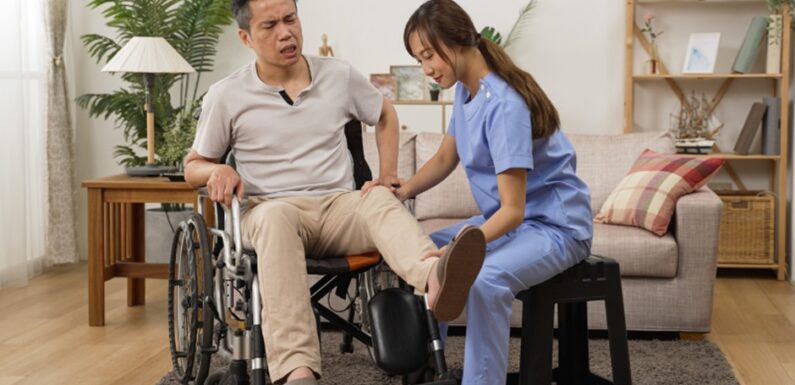
Individuals recovering from a stroke typically encounter difficulties with mobility that may affect the health of their spine. Due to this, rehabilitation following a stroke and physiotherapy for the lumbar spine are essential components of their medical care.
Various advantages can be achieved by combining in-home stroke rehabilitation with therapy for the lumbar spine. Among these is the focus on stroke recovery while guaranteeing the well-being and functionality of the lumbar spine.
Discover the other advantages of combined in-home stroke rehabilitation and lumbar spine therapy, allowing patients to make informed decisions about their spine physio and health.
Enhanced Mobility and Strength
Combining home stroke rehabilitation with lumbar spine physiotherapy enhances overall mobility and strength. Stroke rehabilitation focuses on recovering motor skills, balance, and coordination. Including lumbar spine therapy then helps strengthen the back muscles, which support proper posture and movement.
Key Exercises:
- Bridging: Strengthens lower back and gluteal muscles, supporting spinal health.
- Leg Raises: Enhances abdominal muscles, providing proper lumbar support.
- Pelvic Tilts: Enhances flexibility and reduces lower back stiffness.
Proper Pain Management
Pain management is vital for stroke survivors, many of whom suffer from chronic pain due to immobility and muscle weakness. Lumbar spine physiotherapy addresses lower back pain, a common issue for individuals with limited mobility. Integrating these therapies ensures that pain is managed holistically, reducing the risk of further complications.
Pain Management Techniques:
- Heat and Cold Therapy: Alleviates pain and inflammation.
- Manual Therapy: Reduces pain through spinal manipulation and mobilisation.
- Stretching Exercises: Enhances flexibility and reduces muscle tightness.
Enhanced Balance and Coordination
Home stroke rehabilitation targets balance and coordination restoration, which is essential for everyday activities. Lumbar spine physiotherapy complements this by strengthening the core muscles, which is necessary for maintaining balance. This dual approach ensures patients regain proper movement control, reducing the risk of falls and injuries.
Balance Refinement Strategies:
- Core Strengthening: Exercises like planks and abdominal crunches support spinal stability.
- Balance Training: Activities like standing on one leg or using a balance board enhance coordination.
- Functional Exercises: Practising daily tasks like sitting and standing up enhances overall stability.
Customised Rehabilitation Programs
One of the benefits of combining these therapies is the ability to create customised rehabilitation programs. Each patient has unique needs based on their stroke severity and spine health. Tailored programs ensure that stroke recovery and lumbar spine health are addressed properly.
Customisation Elements:
- Personalised Exercise Plans: Exercises are tailored to the patient’s abilities and recovery stage.
- Regular Assessments: Continuous monitoring and adjustments based on progress.
- Patient Education: Teaching patients about posture, ergonomics, and self-management techniques.
Enhanced Quality of Life

Integrating home stroke rehabilitation with lumbar spine therapy significantly enhances the quality of life for patients. Enhanced mobility, reduced pain, and proper balance allow individuals to perform daily activities independently and confidently. This holistic approach supports physical recovery and emotional and social well-being.
Quality of Life Enhancements:
- Boosted Independence: Ability to perform self-care tasks with minimal assistance.
- Reduced Caregiver Burden: Less reliance on caregivers due to enhanced functionality.
- Social Engagement: Alleviated participation in social activities and community involvement.
Long-term Health Benefits
The long-term health benefits of combining these therapies are substantial. Regular lumbar spine physiotherapy helps maintain spinal health, preventing future issues. Continued stroke rehabilitation supports sustained recovery, reducing the risk of recurrent strokes. This combined approach promotes overall long-term well-being.
Long-term Benefits:
- Chronic Disease Prevention: Reduced risk of conditions like osteoporosis and arthritis.
- Sustained Mobility: Long-term exercise routines maintain strength and flexibility.
- Continuous Progress: Ongoing rehabilitation ensures consistent progress and maintenance.
Practical Implementation Tips
Implementing a combined rehabilitation program at home requires careful planning and coordination. Patients and caregivers should work closely with healthcare professionals to design and follow a practical plan.
Implementation Tips:
- Home Assessment: Evaluate the home environment for safety and accessibility.
- Scheduled Sessions: Set regular times for exercise and therapy sessions.
- Professional Guidance: Regular check-ins with physiotherapists to monitor progress and adjust plans.
- Support Systems: Engage family and friends for encouragement and assistance.
Conclusion
Integrating home-based stroke rehabilitation with lumbar spine physiotherapy offers a holistic method for recovery and ongoing health management. This combined approach enhances movement, pain management, and stability and also tailors treatment for patients, enhancing their quality of life and supporting long-term wellness. By combining these treatments, patients can attain sweetened results and a brighter path to recovery.
Visit The Home Physio and let us guide you through a holistic rehabilitation journey.

